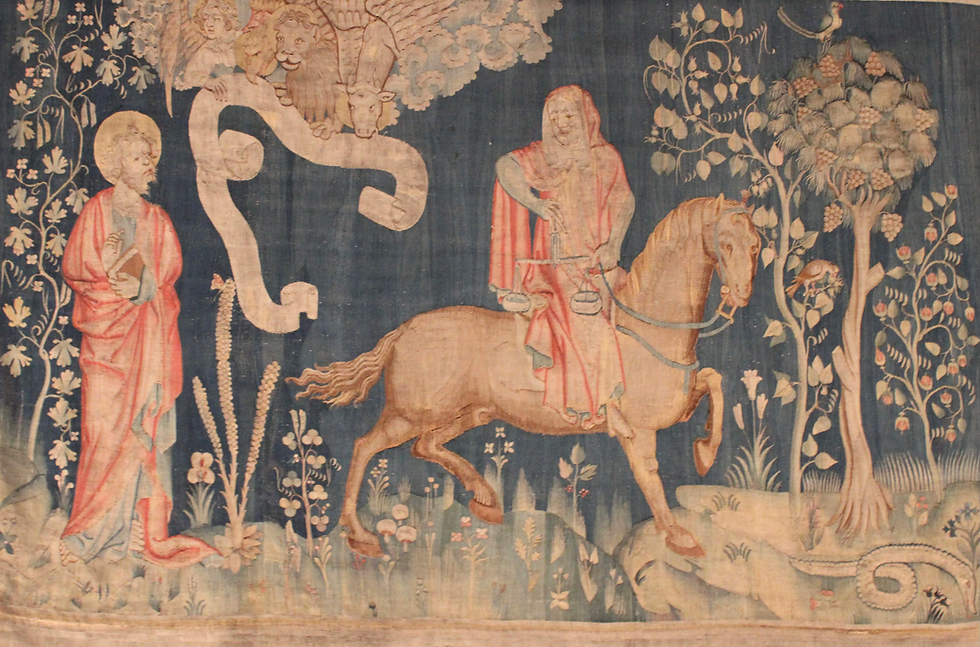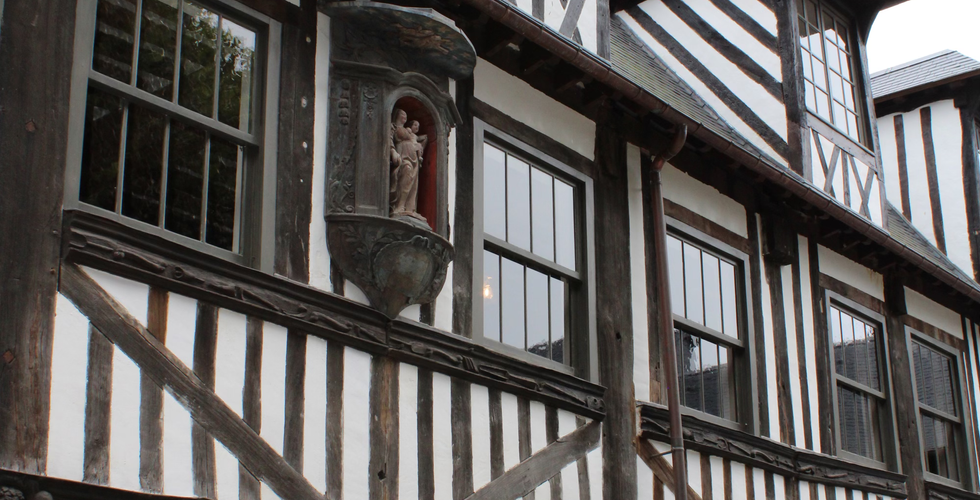Traveling through France During a Pandemic Reveals Ancient Reminders of a Previous Contagion
- Aidan Drohan

- Feb 17, 2022
- 4 min read
Updated: Feb 18, 2022

The mid fourteenth century is regarded as one of the most calamitous times in recorded history - seemingly endless war ravaged the land, famine became rampant due to food scarcity, and inflation soared as the financial demands of the Hundred Years War mounted. As the war uneasily staggered towards a pivotal climax, a new threat was about to descend upon Europe from the east, a pestilence who’s effect on medieval society can still be eerily felt in the narrow, dark, and winding streets of many medieval cities in France today - The Bubonic Plague.
Commonly known today as the Black Death, the Bubonic Plague was a highly contagious and deadly disease which afflicted most of Europe from 1348-1355 A.D, killing nearly a third of its populace and instigating great political and social upheaval. The origins of the plague are still debated to this day, but most historians and epidemiologists agree that the disease entered Europe through the influential Italian trading ports of Genoa and Venice, traveling upon merchant vessels trading with the Levant. Rats commonly made trading vessels their home, infecting fleas with the disease, who in turn bit and infected human beings. Unsanitary conditions in cities did little to prevent the disease from rapidly spreading, as most residences were multi-family households, a common occurrence among the common people of the time.
With the Covid-19 Pandemic enveloping much of our world today, it is impossible to ignore the similarities which can be drawn between the Bubonic Plague and Covid-19. Much like the emergence of the Delta Variant which has recently led to a resurgence in Covid cases, the Black Death swept through Europe in two waves, and remained a threat to the healthy populations of Europe for nearly a century. Similar tactics of self isolation were also recorded in medieval Europe to prevent the spread of disease, as the phrase “quarantine” was coined to refer to the Venetian method of quarantining traders entering Venice on offshore islands for nearly a month at a time, until it was determined that the plague had not contaminated the cargo or infected the crew. Much like Covid, the plague also brought society to a temporary standstill. Shops went unattended, fields went unworked, and livestock perished due to neglect, as peasants and nobles alike fled with their families to the countryside and remained isolated in their homes. It became impossible for both the French and the English to wage war, as any army raised would quickly succumb to the plague and few, if any men at all, could be coerced to answer a general call to arms.
Interestingly, the scars left behind by the plague can still be examined today in one of France’s most medieval cities, Rouen. The tall and crooked timbered houses that line the cobblestone streets serve to remind passerby’s of a time long gone, depicting a semblance of what city life would have felt like in the 14th and early 15th centuries. The Plague was

especially tough on Rouen, leaving the city with about two thirds of its population dead within the first year. The Plague Cemetery, which still stands near the center of Rouen today, is an amazing time capsule from the mid fourteenth century, containing preserved stone and wood beam engravings depicting skulls, bones, religious icons, and the tools used by undertakers; important iconography from the time showing the exorbitant amount of death and suffering which the people of the city had to endure. The Cemetery is not one in its most traditional sense, as it is a timbered courtyard adjoined by wood beams and columns. This was due to the vast number of dead which had to be quickly buried in mass graves on the site in order to prevent further disease from spreading in the city, and to facilitate an efficient corpse disposal system. Today, the cemetery is an extremely peaceful and quiet location containing a small cafe and pastisserie, possessing a reflective atmosphere best experienced during a cool morning.
Further south in the Dordogne region of France, the town of Sarlat-La-Caneda boasts an impressive memorial to the remembrance of those from the region who perished during the plague, the town having suffered 2/3 of their population dead within a week of the

disease entering the village, dramatically underscoring the plague’s lethality. Fifteen minutes south of Sarlat-La-Caneda lies the village of Gigiac, where a quarantine house used for travelers during times of plague still stands at the end of the main street, reminding tourists of the great influence which the plague had upon medieval society. The beautiful Dordogne River used in the 14th and early 15th centuries by wine traders bringing their products to market in Bordeaux and the beautiful rolling green hills and vineyards of the region serve as a strange juxtaposition between a peaceful abundance life and the past destructiveness of the plague.
One cannot help but to think of what life altering societal changes will be adopted from our own time of pandemic, and how future generations will analyze our own time of pestilence. However, looking to the past can give us great solace in times of uncertainty. These quiet reminders of another turbulent time, gently tucked away against the whirl of the modern world, bear testament to the resiliency of humanity and our ability to prevail against the trials of life without forgetting the past.








proud of you! Keep the good work up.